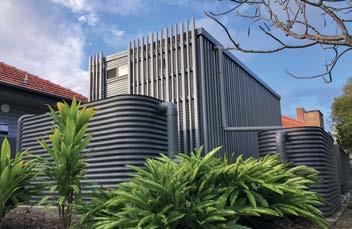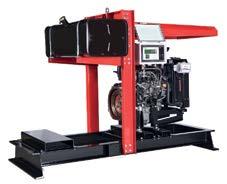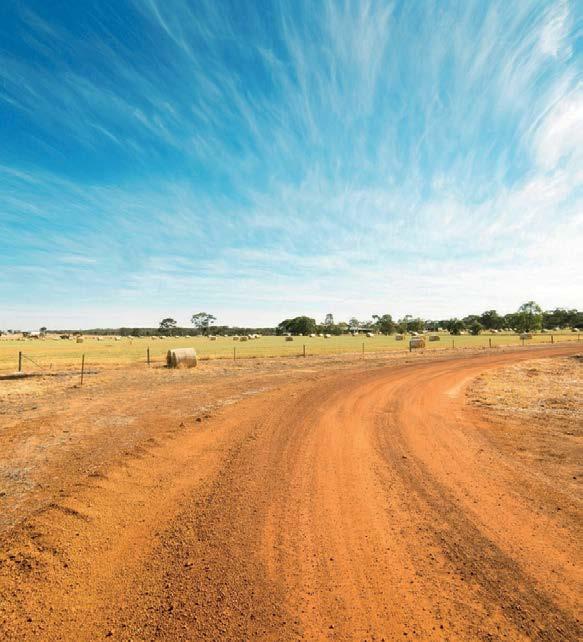
3 minute read
The Big Issue
RAINWATER HARVESTING TO PLAY BIGGER ROLE IN WATER MANAGEMENT
The contribution of rainwater harvesting to water management strategies is growing in importance and being recognised as a big issue by more people in the irrigation industry in Australia.
In fact, rainwater harvesting is the first and essential element in managing the relationship between human land use systems and water. All buildings in Australia should have rainwater harvesting, and all agricultural land should include basic rainwater harvesting passive design features.
The current drought in much of Australia and predictions of significantly decreased streamflow into many of our creeks and rivers provide a window to the future and demonstrate the need to develop a range of water sources for our growing population. These sources include dams, desalination, rainwater harvesting and recycled water. Having many sources of water means that we can use water in new, and much more efficient, combinations.
Benefits of rainwater harvesting Rainwater is always local, so it doesn’t have to be transported long distances to your home or land. When it falls on your roof there are relatively few opportunities for contamination, so treatment costs are much lower than for other kinds of water.
The temptation for many people with rainwater tanks is to save the captured water for “later”. With modern technology we don’t need to save all our rainwater, rather it is better to use it and save more expensive, treated water that might have to be transported 100 km to your home. This means that the smart way to use rainwater is to use it first, and then use another source of water when it runs out. The tank then will be empty enough to capture water when it rains.
Rainwater harvesting can be used for many different things. Some people grow plants with it, some people drink it, some flush their toilets with it or use it to wash clothes, water animals or use it to recharge groundwater, while others use it to improve the health of local waterways and reduce flooding. Some people use it for lots of these things at the same time. Each local community has its own special needs, climate, culture and way that it wants to use water.
Rainwater harvesting can make a difference An important message for the industry to be relaying to the community is that although you might only have a small roof and a small tank, rainwater harvesting can make an important difference.
While we all know about big storms, unless you live outside few of us appreciate the many smaller rainfall events that fall from the heavens. Because a roof is a hard surface, even a small amount of rain will flow from the roof and run into a tank. Lots of small rainfall adds up to a steady stream of water flowing into the tank over hours, days and weeks. We can match this supply with a steady stream of small uses for rainwater. Lots of water flows into the tank, and lots flows out, but not all at the same time. So, a small tank can capture much more water than it can hold at once - ten or twenty or a hundred times as much.
Even if it only rains for a part of the year in your area, using rainwater in these times makes a much bigger difference than most people realise. The simple act of harvesting rainwater can change the world and make it a better, more efficient place that works with, not against, nature.



THE NEW I-50 LARGE TURF ROTOR is built to conquer the demanding conditions of dirty water. With the same powerful, high-torque drive mechanism and arc adjustment style as our time-proven golf rotors, the I-50 ensures years of top performance in every application.
National Free Call: 1 800 HUNTER Toll-Free Fax: 1 800 651 680 www.hrproducts.com.au hrsales@hrproducts.com.au Tel: 1 300 856 368 Fax: 1 300 856 369 www.nelsonirrigation.com.au info@nelsonirrigation.com.au Suite 7, 202 Ferntree Gully Road, Notting Hill, Melbourne, Victoria, 3168, Australia
Tel: 61 3 9562 9918 Fax: 61 3 9558 6983










